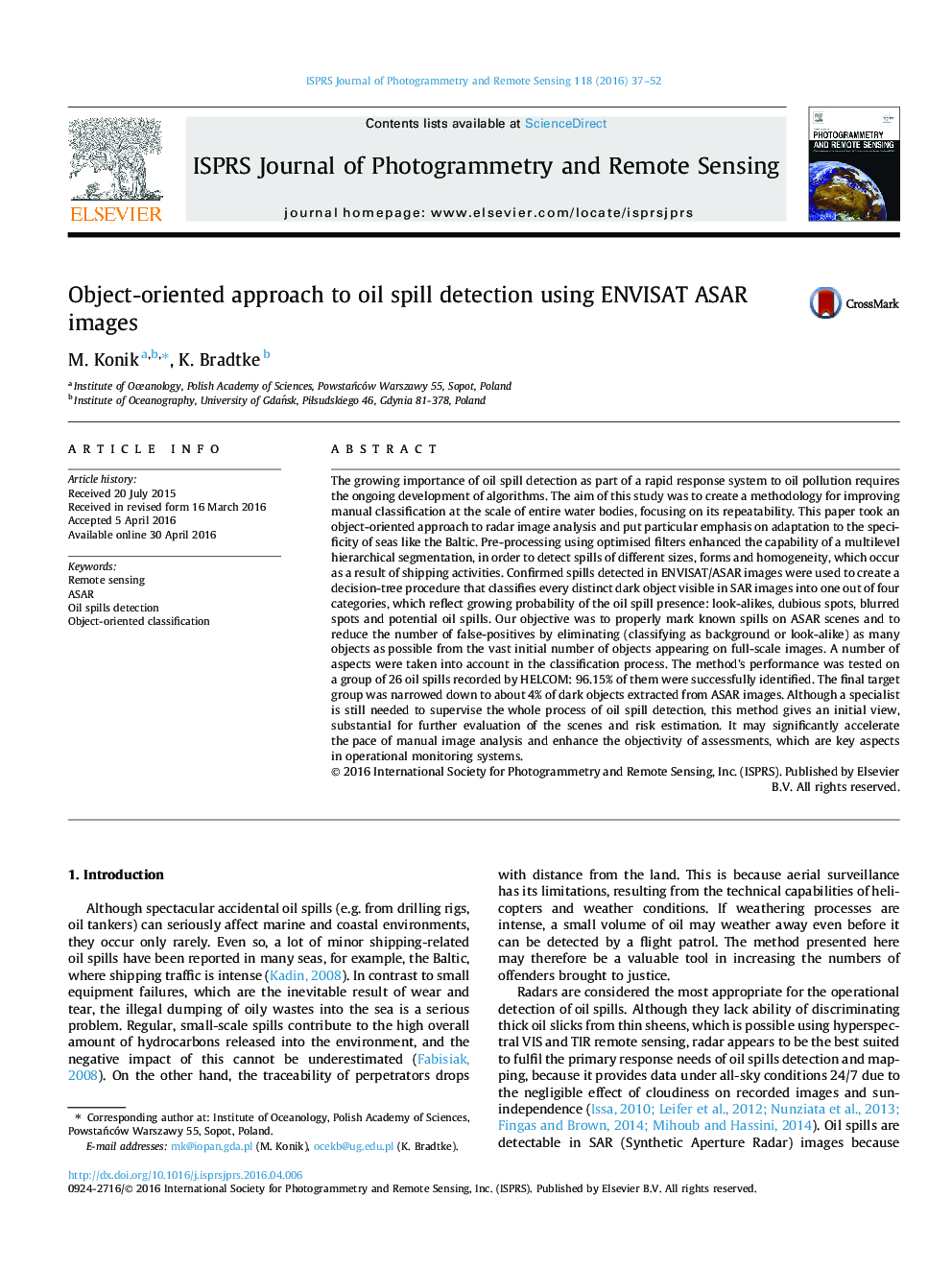| کد مقاله | کد نشریه | سال انتشار | مقاله انگلیسی | نسخه تمام متن |
|---|---|---|---|---|
| 554897 | 1451256 | 2016 | 16 صفحه PDF | دانلود رایگان |

• An algorithm for small or medium-sized, shipping-related oil spill detection is proposed.
• Allows for operational, flexible supervised object classification of radar images.
• It excluded over 95% of false alarms in a test on oil spills reported to HELCOM.
• Designed to assist professionals in radar image interpretation.
• Repeatable and fully objective assessment intended for monitoring services.
The growing importance of oil spill detection as part of a rapid response system to oil pollution requires the ongoing development of algorithms. The aim of this study was to create a methodology for improving manual classification at the scale of entire water bodies, focusing on its repeatability. This paper took an object-oriented approach to radar image analysis and put particular emphasis on adaptation to the specificity of seas like the Baltic. Pre-processing using optimised filters enhanced the capability of a multilevel hierarchical segmentation, in order to detect spills of different sizes, forms and homogeneity, which occur as a result of shipping activities. Confirmed spills detected in ENVISAT/ASAR images were used to create a decision-tree procedure that classifies every distinct dark object visible in SAR images into one out of four categories, which reflect growing probability of the oil spill presence: look-alikes, dubious spots, blurred spots and potential oil spills. Our objective was to properly mark known spills on ASAR scenes and to reduce the number of false-positives by eliminating (classifying as background or look-alike) as many objects as possible from the vast initial number of objects appearing on full-scale images. A number of aspects were taken into account in the classification process. The method’s performance was tested on a group of 26 oil spills recorded by HELCOM: 96.15% of them were successfully identified. The final target group was narrowed down to about 4% of dark objects extracted from ASAR images. Although a specialist is still needed to supervise the whole process of oil spill detection, this method gives an initial view, substantial for further evaluation of the scenes and risk estimation. It may significantly accelerate the pace of manual image analysis and enhance the objectivity of assessments, which are key aspects in operational monitoring systems.
Journal: ISPRS Journal of Photogrammetry and Remote Sensing - Volume 118, August 2016, Pages 37–52